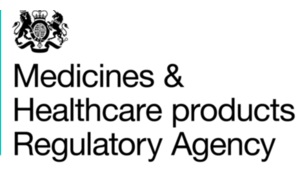11. Is it acceptable for the TMF to be electronic?
Yes, either completely or a mixture of paper and electronic, provided this structure is sufficiently defined. There is an increasing use of eTMFs instead of paper based TMFs in the management of clinical trials and the same controls must be available for managing the eTMF as for a paper TMF in terms of security, control over unauthorised edits and access, ease of retrieval of documents etc.
Some eTMF are really the storage of documents within folders in a computer systems’ operating environment. Such systems have been typically shared areas where everyone has access in the organisation and documents could easily be moved, deleted, replaced etc and with a lack of version control so there is ambiguity over which is the current version and which is a superseded version. These systems would require appropriate controls and security to be in place, which would include role based permissions for activities being undertaken through the use of secure passwords. Accounts should be created and deleted within a formal approval process and in a timely manner. This is analogous to the paper system where the TMF is kept in a secure location, with restricted access. There should also be a back up of the system. A more acceptable solution is where the eTMF is a document management system containing further controls. For example, where the system is being used for approval of documents via a workflow system, password enabled electronic signatures should be used, the system must have an audit trail in place to identify date/time/user details for creation, uploading, approval and changes to a document. It would also be recommended that a system for locking documents or the entire eTMF is considered to prevent changes to documents, such as when the eTMF is archived. Finally, all members of staff involved in the conduct of the trial must receive training in using the system and this should be documented.
The eTMF could contain digital documents in their original format, potentially with digital signatures, or records that have been converted from another format (such as paper documents that have been converted to digital images, which may contain wet-ink signatures). Records that only exist in a digital format are often only printed onto paper at the time of an inspection as they normally are accessed in their digital form. This can result in loss of any version control applied in the computer system (e.g. dated filename). An example of this could be the “edit checks” specification used by data management. Such documents, when uploaded into the eTMF may also have the same potential issue which re-enforces the requirement that all documents should have clear version control which is maintained on transition from one media, or from one system, to another.
Unlike a paper TMF, documents loaded into the eTMF will require the addition of metadata to enable the document to be identified within the system. Metadata is that data that is associated with the document (but not the document itself) so typically would be identifying codes for the trial, site, protocol, product etc. The type of metadata is recommended to be formally defined to ensure consistency across all documents.
The eTMF will require validation to demonstrate that the functionality is fit for purpose, with formal procedures in place to manage this process and for change control. The validation of the system should follow previously published standards. The documentation for this process must be retained.
There is also the potential for the investigator site file, held by the principal investigator, to become electronic, with the system either provided by the sponsor, a vendor or by the host site organisation. The documentation in the investigator site file will contain source documents, for example, subject screening and identity logs, consent forms, drug accountability records etc, and the control of these must remain with the investigator unless specific consent had been obtained from trial subjects for their personal information to be released from the trial site. A situation where all the site records are sent to the external sponsor for uploading onto an eTMF system, which the investigator then accesses via a portal, would breach this requirement. The sponsor should consider the EMA GCP Inspectors Working Group Reflection paper on expectations for electronic source data and data transcribed to electronic data collection tools in clinical trials (EMA/INS/GCP/454280/2010), as the considerations and recommendations will have applicability to source documents contained in eTMFs.
Version 1: 17th December 2012




